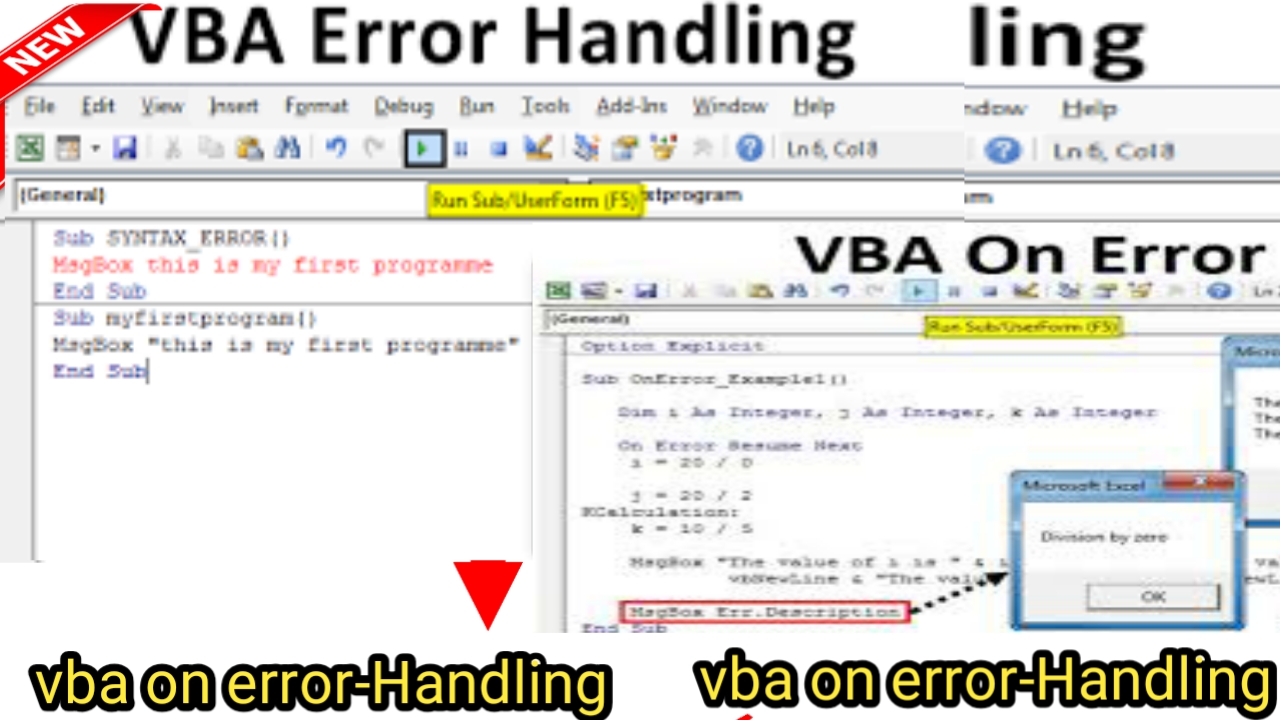
The error hander is still active when the second error occurs, and therefore the second error is not trapped by the On Error statement. When the first error is raised, execution transfers to the line following Err1.
Excel vba on error goto errorhandler code#
For example, the following code will not work properly: On Error GoTo Err1: You can't use the On Error Goto : statement merely skip over lines. This code should be designed either to fix the problem and resume execution in the main code block or to terminate execution of the procedure. This site has a good description of the problem:Īn error handling block, also called an error handler, is a section of code to which execution is tranferred via a On Error Goto : statement. This clearly delineates error handling from regular code and ensures that the currently executing error handler finishes before you try to set up another handler. That means that subsequent error handlers are not allowed until you resume from the current one.Ī better architecture would be: Dim m圜ol As ListColumn

With the code as shown, you're actually still considered to be within the error handling routine when you strike the next statement. To reiterate, the error is thrown on the second round of the loop, at the statement myDate = CDate(m圜ol.Name)Ĭan anyone explain why the On Error statement stops working?

However, when the second column's header is 'assigned' to the date-type variable, the macro encounters an error even though it is within an error-handling block Dim m圜ol As ListColumn Since the first three columns do not have date headers, I have tried to set the loop up so that, if there is an error assigning the header string to the date-type variable, the loop goes straight to the next column To do this I am using a foreach loop on myTable.ListColumns. I want to assign those dates, sequentially, to a Date-type variable, and then perform some operations based on the date The first three columns of this table have text headings, the rest of them have dates as headings.

Now, the problem here is that Err.Num is the number of the last error, so if you had many errors during the execution of the code, you wont be able to see the first ones.I'm trying to cycle through a table in excel. (this will just ignore the code lines with an error)Īnd at the end of the code, put something like But if you want to have more control of the errors, i'd recomend you to use The first code you posted was made with the macro recorder, so there's always a way to make it simpler.

We endeavor to provide the best service and support and to respond quickly to your questions. I tried adding a resume function in for the error handler.and that was a nighmare I don't wish to repeat.Īnyway.if you have any suggestions.I'd really appreciate it. Excel Made Easy is a service to people looking to learn Microsoft Excel or any other spreadsheet SW on the market. (so far the 2 reports I set up like this w/out the error handler part - don't always run, but I am not entirely convinced that it is the report - i am thinking it has something to do with the server timing out - and the original way - does make it so you refresh one data source at a time - but there is still no error handling - so it crashes too) Instead of the way it is - but I could be wrong. I think that we should be able to use something simpler like this: BackgroundQuery:=FalseĪctiveSheet.PivotTables("PivotTable1").PivotCache.Refresh


 0 kommentar(er)
0 kommentar(er)
